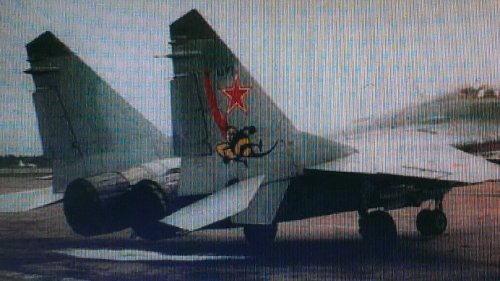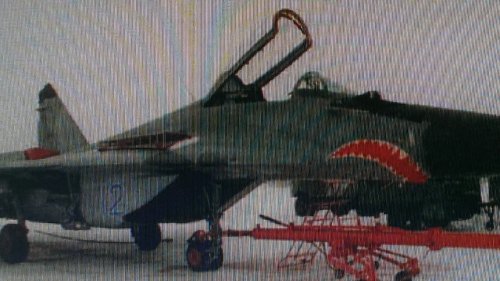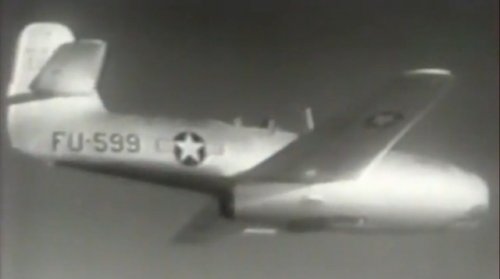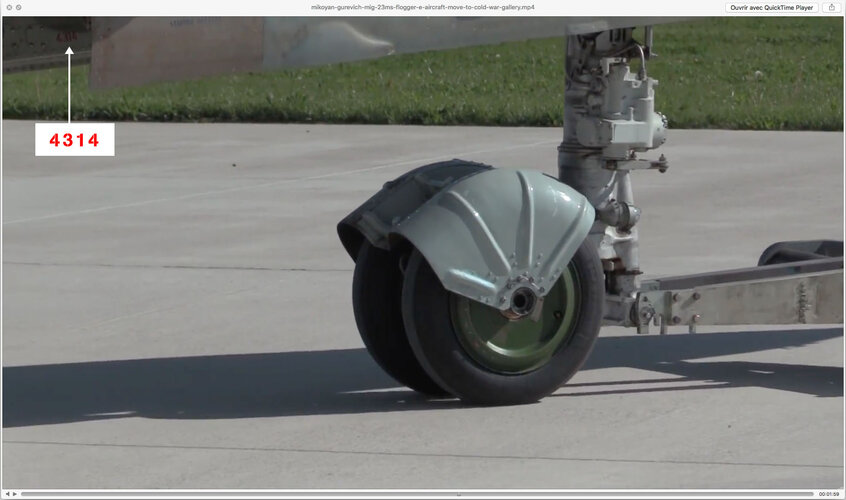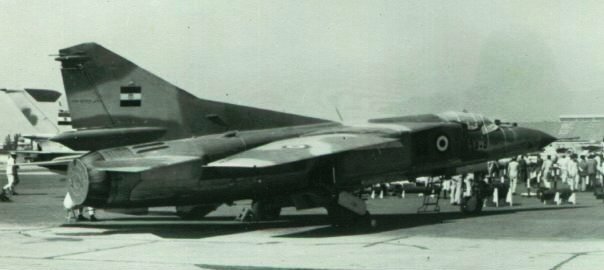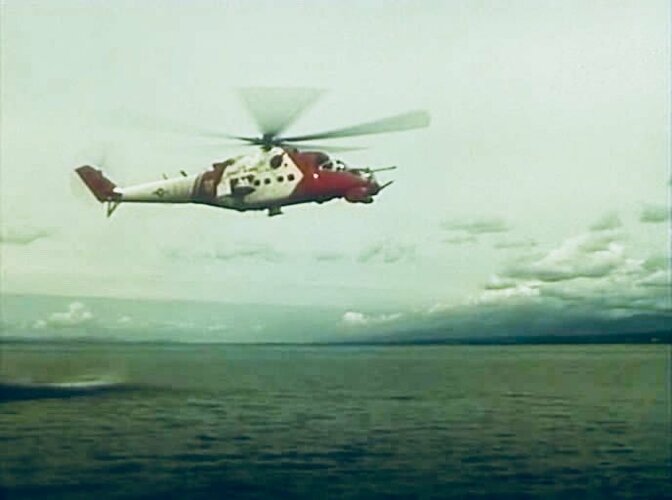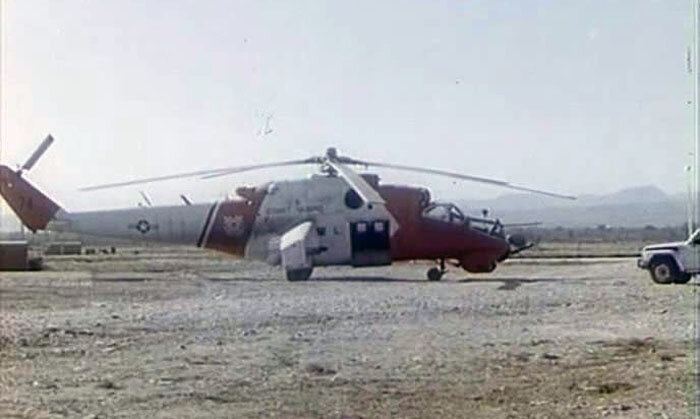- Joined
- 29 July 2009
- Messages
- 1,767
- Reaction score
- 2,456
I asked Mr. Peck, through a follow up email, some additional questions. For those who are interested I am posting a couple of the responses here.
One question involved the procedure for checking out a new Red Eagle pilot on the MiG's since there were no two-seat trainers available for any of the RE MiGs.
"We briefed with an experienced pilot on the systems, emergency procedures as we understood them and general operating procedures like stick back takeoff airspeed, lift off airspeed, A/B out airspeed, climb airspeed, Traffic pattern airspeeds and configurations on initial, downwind, base and final and short final. We got a lot of cockpit time just studying the layout and visualizing the various phases of flight. Then we went back to the experienced pilot, got questions answered and reviewed the details. Next was a supervised start with an NCO on a ladder over the canopy rail making sure we didn't overtemp the engine or have a hot start. The gauges were all analog so the only odd ball was rpm which was actual rpm instead of % of rpm as in our jets. But, that was a numbers game. You just learned the numbers and then read the gauges. After the start we taxied the aircraft out to the runway. This was a challenge because there is no nosewheel steering in the MiG-17 and -21 (there is in the -23). The nose gear castors and turns when the left or right main brake is applied. The brake handle is on the stick below the trigger. When squeezed the pneumatic system in the jet applies air to both main gear brakes. To turn, the rudder pedal is pushed in the direction of turn and that releases the brake on the opposite side permitting the nose wheel to castor generating the turn. Easy to say. Hard to do. Took a while to get the feel of how much and how soon and how hard to push the rudder pedal, etc. A lot of zig zag vs a straight line at the beginning. And, the jets did not have on-board compressors so the pneumatic air had to be serviced before flight and conserved. On the runway we closed the canopy, ran through the checks, pushed the power up released the brakes and lit the A/B. After a short run we chopped the power, deployed the drag chute (MiG-21) and used main and nose wheel braking (MiG-21) to stop. Nose wheel braking was turned off (MiG-21) with an electrical switch and taxi back was normal. We debriefed as though we had flown and then went and did it again, exactly the same way. The only big difference was noting the pitch attitude of the jet at the moment of lift off as that would be the same approximate attitude to look for during the landing flare. We climbed out, did some turns, aileron boost on and off in the -17, did some stall approaches gear up and down and then some aerobatics like chandelles and lazy 8s, rolls, cloverleaf, etc. On the second flight we started to air fight both offensively and defensively. We were chased by a T-38 flown by the experienced MiG pilot on the early flights. That should give you an idea."
Another question relating to HAVE ZINC and the confidence in the KM-1M ejection seat.
"I have never heard of HAVE ZINC. That said, as far as I know Hugh Brown never initiated ejection from the MiG-17 and was killed upon impact. Mark Posti bellied a MiG-17 into the desert and I've been told he said it was such a rough ride he would never do it again. As an aside two pilots were recently killed in S NV at the Boulder City Airport after belly landing an L-39 that lost power on takeoff. The aircraft looked OK after the crash but both of the guys were killed (testifying to the rough ride involved in a desert landing). Posti was killed when he ejected from a MiG-23 on short final at Tonopah. I don't know details as to whether he was out of the envelop or not. The commander(3rd after me) George Gennin seemed to think there was a confidence problem with the pyro. I don't know. During my time there we never talked or thought much about ejecting from what we considered to be National Assets. And, our maintenance reliability was so good that we didn't even preflight the aircraft before we flew (during my time there). Two other pilots safely ejected from a MiG-21 and a MiG-23. There were some issues with the MiG-23 regarding the baro settings in the seat that resulted in a very late and low altitude man-seat separation, but the pilot was fine. We didn't have tech data for stuff like that."
Mr. Peck is a super gentleman and a hero in my book. I look forward to receiving his latest RE picture book.
One question involved the procedure for checking out a new Red Eagle pilot on the MiG's since there were no two-seat trainers available for any of the RE MiGs.
"We briefed with an experienced pilot on the systems, emergency procedures as we understood them and general operating procedures like stick back takeoff airspeed, lift off airspeed, A/B out airspeed, climb airspeed, Traffic pattern airspeeds and configurations on initial, downwind, base and final and short final. We got a lot of cockpit time just studying the layout and visualizing the various phases of flight. Then we went back to the experienced pilot, got questions answered and reviewed the details. Next was a supervised start with an NCO on a ladder over the canopy rail making sure we didn't overtemp the engine or have a hot start. The gauges were all analog so the only odd ball was rpm which was actual rpm instead of % of rpm as in our jets. But, that was a numbers game. You just learned the numbers and then read the gauges. After the start we taxied the aircraft out to the runway. This was a challenge because there is no nosewheel steering in the MiG-17 and -21 (there is in the -23). The nose gear castors and turns when the left or right main brake is applied. The brake handle is on the stick below the trigger. When squeezed the pneumatic system in the jet applies air to both main gear brakes. To turn, the rudder pedal is pushed in the direction of turn and that releases the brake on the opposite side permitting the nose wheel to castor generating the turn. Easy to say. Hard to do. Took a while to get the feel of how much and how soon and how hard to push the rudder pedal, etc. A lot of zig zag vs a straight line at the beginning. And, the jets did not have on-board compressors so the pneumatic air had to be serviced before flight and conserved. On the runway we closed the canopy, ran through the checks, pushed the power up released the brakes and lit the A/B. After a short run we chopped the power, deployed the drag chute (MiG-21) and used main and nose wheel braking (MiG-21) to stop. Nose wheel braking was turned off (MiG-21) with an electrical switch and taxi back was normal. We debriefed as though we had flown and then went and did it again, exactly the same way. The only big difference was noting the pitch attitude of the jet at the moment of lift off as that would be the same approximate attitude to look for during the landing flare. We climbed out, did some turns, aileron boost on and off in the -17, did some stall approaches gear up and down and then some aerobatics like chandelles and lazy 8s, rolls, cloverleaf, etc. On the second flight we started to air fight both offensively and defensively. We were chased by a T-38 flown by the experienced MiG pilot on the early flights. That should give you an idea."
Another question relating to HAVE ZINC and the confidence in the KM-1M ejection seat.
"I have never heard of HAVE ZINC. That said, as far as I know Hugh Brown never initiated ejection from the MiG-17 and was killed upon impact. Mark Posti bellied a MiG-17 into the desert and I've been told he said it was such a rough ride he would never do it again. As an aside two pilots were recently killed in S NV at the Boulder City Airport after belly landing an L-39 that lost power on takeoff. The aircraft looked OK after the crash but both of the guys were killed (testifying to the rough ride involved in a desert landing). Posti was killed when he ejected from a MiG-23 on short final at Tonopah. I don't know details as to whether he was out of the envelop or not. The commander(3rd after me) George Gennin seemed to think there was a confidence problem with the pyro. I don't know. During my time there we never talked or thought much about ejecting from what we considered to be National Assets. And, our maintenance reliability was so good that we didn't even preflight the aircraft before we flew (during my time there). Two other pilots safely ejected from a MiG-21 and a MiG-23. There were some issues with the MiG-23 regarding the baro settings in the seat that resulted in a very late and low altitude man-seat separation, but the pilot was fine. We didn't have tech data for stuff like that."
Mr. Peck is a super gentleman and a hero in my book. I look forward to receiving his latest RE picture book.

